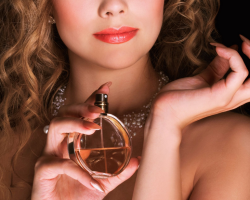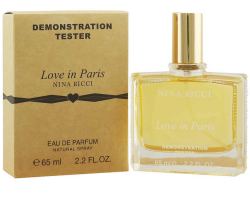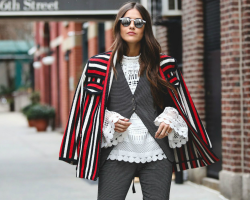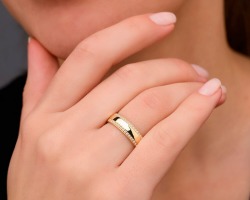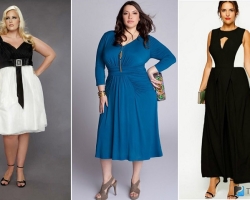In this article, we will consider how to decorate gloves or sleeves with a fur decoration.
Content
- How to sew fur to gloves: basic requirements
- How to sew fur to gloves: make a pompom
- How to sew fur to knitted or fabric gloves: basic algorithm
- How to sew fur to leather gloves: Instructions
- How to sew fur on gloves or mittens in the form of cuffs?
- How to sew fur on sleeves: making fur cuffs on a jacket or coat
- Video: how to sew fur - we sew fur mittens
Fur is a unique material that can give a luxurious appearance to even the simplest product. The fur finish on gloves, mittens or sleeves of outerwear can be used as a decorative element that completes a stylish and elegant image, and as one of the ways of restoring the product that gives it an updated look.
In addition, fur cuffs allow you to significantly insulate the area of \u200b\u200bthe wrist, which is important for a woman in cold winter weather. You can, of course, order such a finish in the atelier, but it is not difficult to sew the fur with your own hands - what you will see when you read this article.
How to sew fur to gloves: basic requirements
For decoration, you can use any fur, but more beautiful things are obtained from thick and long pile of a arctic fox, fox and raccoon. As a budget version, a rabbit is suitable, and you can also use artificial fur. Of course, a mink will also look good, especially in the form of cuffs. But it is important not only to sew the fur to the product correctly, but also to arm yourself with several important rules.

- When cutting out fur trim, it should be borne in mind that You can’t cut the fur with scissors! To do this, use a fussy, stationery knife or blade in a special holder. At the same time, you do not need to press too much on the mezer - you can hurt and cut off the fur on the other side. We work with light movements. It is allowed to cut with scissors only a rabbit fur or artificial material. But you still need to work carefully!
- The connection of the fur finish with the product can be carried out in different ways - both directly and using lining. In principle, the fur on gloves is not subject to such large deformation as for example pockets. But when creating a cuff, Details are better to duplicate - This will increase the wear resistance and strength of the material. Such duplicate materials for fur are distinguished:
- flizelin, As the most economical option with adhesive application. It is important to take a low -temperature material so as not to burn the cozer;
- dublerin With droplets of glue on one side, it is also worth taking only low -temperature. This species is suitable for skin and fur. And immediately small advice - This material is much stronger and not as elastic as non -woven. Therefore, masters often choose it, especially when sewing expensive and large products;
- there are also crinoline.Satin, chintz, slanting bake or simple braid are similar to her. These materials do not stretch and restrain the fur from stretching. They are sewn strictly along the edges of the product.

- You can fur to the gloves yourself:
- sew with a manual seam
- stitch on a typewriter with a preliminary sparking of parts in the right place
- glue
- Special attention should be paid to self -adhesive tape It is for the skin and fur, as well as on glue web. The first species, by the way, is also used to duplicate the edges of the skin and fur, but the second option is more universal and is also used to glue parts among themselves.
Important: if you plant the fur on a web, then keep in mind that it must still be duplicated on the tape and manually sew the product to this tape from the wrong side.
- It is worth highlighting such a glue to glue the fur:
- PVA for the skin
- Naic
- Dysmocol glue
- the usual moment

- Threads used to sew mezers, Must be very durable. But keep in mind that they should not cut the mezar! Do not take cotton threads! The best option is polyester.
- It is better to take the needle to take a fussy needle No. 40.
- To sew fur parts, the seams “goat”, “zigzag” or “ Skornya seam. The latter species is the most durable and suitable if you do not have a fussy machine at home. After all, on an ordinary typewriter, some seams can go in waves. In addition, it is more convenient to sew on gloves with a hand seam. Its big plus is that each stitch closes and the seam does not diverge when the thread rupture. It is performed obliquely, and then duplicated in the same hole with the direction of the needle "on itself."

How to sew fur to gloves: make a pompom

Sewing the fur to gloves or to another part of your wardrobe in the form of pompon will not be difficult. Moreover, this process will take this process for a maximum of half an hour, and old gloves will turn into the trend of the winter season. You are required:
- Cut the circle Or any other form of a mezra shock (depending on what pieces of fur you have in stock). Then go along the edge with simple stitches. Gently tighten the threads for both ends, stuff with synthetic winterizer, tighten well with the thread and tie it.

- The same thread Sew to gloves, Making through punctures in the glove and capturing part of the pompon. You can do otherwise - put on glue or sew a button! In the latter case, you can unfasten the pompom for the duration of washing or to replace the decoration.

- By the way, do not be afraid for leather gloves - They are not afraid of punctures. The only condition is that you should not make many holes and try to make the right punctures in the right place the first time. Because the A broken Mazdra does not look very beautiful and still loses its properties.With cashmere or knitted gloves, there are no such fears at all.
By the way, a good example is that pompons look much richer and more solid from thick and long fur than from a simple rabbit and, even more so, from artificial fur. No, you can make from any canvas and material that you like. Massive jewelry should be made of long fur as a fox or raccoon. Artificial fur or even mink is not suitable for pompons, like a rabbit. Or you can make small jewelry from them.

We also recommend reading an article on how to sew fur pompons from various types of fur in our article "How to make a fur pompom with your own hands?"
How to sew fur to knitted or fabric gloves: basic algorithm
For the manufacture of fur decor on the outer sides of gloves or mittens we need: the product that we will decorate; square pieces of fur, size equal to the width of the glove; needles, threads; Tesma is the same color as fur.
IMPORTANT: The interior fur should lie down towards the fingers, and not vice versa.

- You make measurements according to your gloves and to your taste. Sewing fur to fabric or knitted canvas is very simple. Therefore, the fur can be from the seam to the seam, in the center, side or at the edges - as you like!
- Due to the fact that The fabric itself is more elastic than the skin (Mezdra fur), and the knitted product has the ability to stretch hard, then Be sure to use a restraining, dubbing tape. Above, we indicated possible methods of duplication of fur, so you can choose the method convenient for you.
- In our example, we will use braid. We sew it to each side of the fur with a fussy seam, trying not to stretch the cozer, but rather, to pick it up a little when laying the stitches. As a guideline - 8.5 cm of braid is 7.5 cm of fur. At the same time, we try to round the corners a little!

- Then we tie the tape inside, applying to the mezor, and sew with rare stitches. Pay attention to the corners - add their overlap. On the front side, the stitches can capture the villi, we correct them and carefully tighten the thread to the end.

- After the Mazdra is sheathed from all sides, we apply it to the glove. We fix it with pins in the corner points and begin to sew the tape to the glove with a hidden seam with small stitches.
- Please note that when decorating the outer side of the knitted glove You should sew a glove and tape, not a fur! Thanks to this, when bending the hand, there will be no load on the Mazra and it will last longer. Also as advice - periodically check the tension of the thread during sewing. She should go freely and not pull the skin.

How to sew fur to leather gloves: Instructions
To sew the fur to the leather product, the task is a little more complicated. After all, it is not a hunt to pierce the skin hard, but it is completely dangerous to subject this to the leather -lubricant. Otherwise, the service life is significantly reduced. We will tell you how to be in such a situation.
You can use absolutely any fur. This example uses the rabbit fur purely as a black version. Cutings from other work will be used, because there is no need for a lot of fur for lining gloves. First we cut out the flap of the size we need. You need to measure from the seam to the seam with a small allowance.

As a result, we get a segment with a size of 12 by 8 cm. We apply gloves to the edge of the top and literally a millimeter from the edge, along the seam, sew our fur. You can go through an ordinary machine seam or sew your hands without tightening the thread. To do this, lay out the fur with a mezer up. In the example, the glove itself has a wave -like top - You need to sew strictly according to the relief!

We turn off and get the fur on top of the gloves. Watch You got into almost the machine seam itself on the glove. A small deviation is allowed, because fluffy fur (even in this case) closes all the “sides”.

This is what the front side looks like if you bend the fur.

On leather gloves, sew the fur decor seam in the seam. Ideally, of course, you need to tear the seams on the glove, sew the fur to the skin, somewhere in the area of \u200b\u200bthe brush, cut off excess (not necessarily) and already sew the fur to the glove. But if you do not burn with a desire to mess with so much, then we do it easier! We make a seam to the seam! Below we also show the scheme of the seam itself, which is used to sew fur. That is, we captured part of the fur (the thread will not be visible because of the pile) and captured the threads in the factory seam of gloves.

We fix the corner well from the inside! We will not sew the fur in the area of \u200b\u200bthe brush. Firstly, there is no need to punch the skin once again. And secondly, in the example we did not duplicate the fur itself. And so that when bending the brush of Mesdra, the fur is not pulled, we will not sew it. But it is worth noting that if you sew fur on the skin, then it itself does not stretch like a fabric, so there is no need to worry much.

As a result, we get such gloves decorated with fur.

How to sew fur on gloves or mittens in the form of cuffs?
Again, to sew the fur in the form of cuffs, it is worth pushing the gloves themselves from the material. But the scheme itself is similar.
This is how we sew to tissue, cashmere gloves:
- We cut out two fur collates with a length of about 22 cm long, 12 cm wide (we put them in half)
- Fix the fur face to face and sew on the sides
- To make it more convenient to sew to the glove, pull on a round base. Keep in mind that your hand should take place. And sew the seam "goat" or "zigzag"
- The fur bell sew gloves to the bell only along the upper edge
- Now bend 2-2.5 cm, sew our fur and wrap it on a glove

This is how you can sew on the knittedmittens:
- This is the easiest method. You put the gloves in the gloves of the fur, that is, the front side to the inside of the glove
- Sprinkled with overlock or zigzag seam
- Turn and get cuffs on mittens. Do not forget to sew fur on the side seams

If their skin gloves:
- Please note that we sew in a circle of our fur in the area slightly higher than the location of the thumb. You can do this by any seam, the main thing is not to tighten much so as not to damage the coin.
- Then we turn off and fasten the hand seam from the wrong side.
- To fasten the fur seam and decorate the accessory, buttons are used in the example.

Any fur can be sewn for a similar scheme. For example, such beauty is created from narrow, but magnificent fur. In the same way, it is sewn face to face, literally 2-3 cm below the edge of the glove. To create a splendor effect, you can fill in additionally with a synthetic winterizer. Wrap the fur, as in the previous scheme, a little on the wrong side of the glove and sew a hidden seam. The only difference is - sew the fur to the final step.

How to sew fur on sleeves: making fur cuffs on a jacket or coat
In principle, the above schemes are also suitable in order to sew the fur directly to the sleeves. But you can make them differently, with a lining, or completely make them removable.
If the cuffs are fastened to the sleeves
- We take the segment or sew several strips of fur. Fold the facial parts of the fur with lining material. We pass overlock or zigzag seam on a typewriter.

- Through a small hole, turn our fur. We sew manually with an easy seam. If you do not plan to unfasten the fur, then sew it to the sleeves. If it is removable with you, then do not forget to insert loops with access to the front side while sewing the liner.

It remains only to sew buttons on the sleeves and put on the cuffs

But you can make just a fashionable accessory in the form of cuffs, which can be dressed for any along!
Take any fur - cut out two shreds 22 cm high (it will be bent in half). The width of the product is equal to your arm volume plus 2-3 cm for allowances and thickness thickness. Gums are inserted according to the volume of the arm to hold the cuffs themselves.
First of all, we sew future cuffs on the sides.

Now insert the rubber bands, sew them together. Then we sew a hidden seam in a circle and the fur itself.


As you can see, you can sew the fur on any type of clothing. Moreover, you can use completely different schemes.


